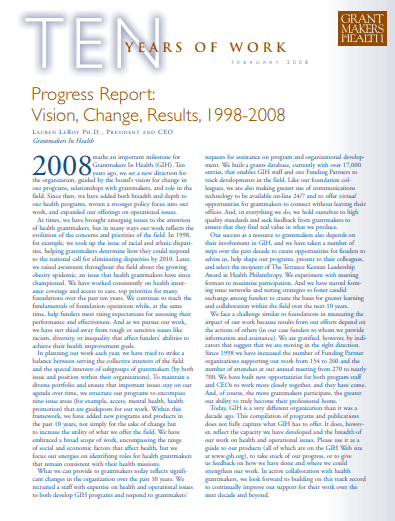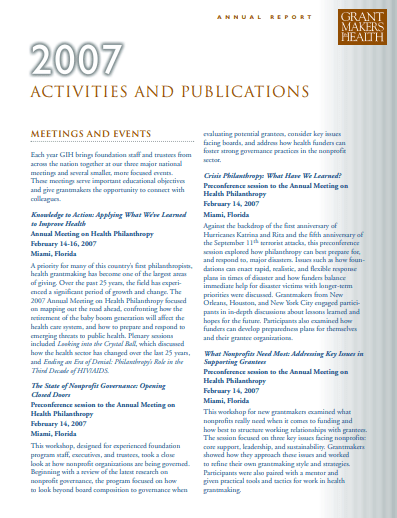Pediatric Medical Homes: The What and Why of It All
The “medical home” encompasses the places, people, and processes involved in providing comprehensive primary care services. Medical homes replace episodic patient care with a holistic approach fostering ongoing physician-patient relationships, systematic care coordination, and addressing the “whole person.” They also must deliver physician-directed patient care that is accessible, family-centered, comprehensive, continuous, coordinated, compassionate, and culturally effective.
Health Information Technology: Increasing Quality and Access within Safety Net Providers
Health foundations are uniquely positioned to help safety net providers reach their full health information technology potential, and by providing various means of support, foundations can help to bridge competitive tensions that often derail cooperation.
GIH Products, 1998-2016
Read this compilation of programs and publications to gain an understanding of what GIH has offered the field of health philanthropy, how we have developed, and the breadth of our work on health and operational issues. Click on the title above for the complete compilation of GIH programming.
Infant Mortality: Racial and Regional Disparities
Infant mortality is an important measure of maternal and child health status, as well as a broader indicator of a society’s health and well-being. In the United States infant mortality rates have held stubbornly at about 7 percent for the last 10 years. This statistic, however, masks significant racial and regional disparities.
Strengthening Government Public Health Agencies
Health funders at the national, state, and local levels have made substantial commitments to improve the functionality of the public health system. Using a variety of approaches, they seek to develop the capabilities, services, and competencies that enhance public health practice.
Annual Report 2007
GIH’s 2007 Annual Report document’s the organization’s programmatic and financial activities.
Bridging, Building, and Beyond: Acceptance Speech of the 2008 Terrance Keenan Leadership Award
The following remarks are excerpted from Terri Langston’s acceptance speech for the Terrance Keenan Leadership Award delivered on February 28, 2008, at the GIH Annual Meeting on Health Philanthropy.
Critical Services for Our Children: Integrating Mental and Oral Health into Primary Care
Grantmakers have long been interested in improving children’s access to health care. Yet, a number of services critical to children’s healthy growth and development—such as mental health and oral health services—fall outside the traditional primary care model. This fragmentation of services has contributed to access barriers and has compromised the quality of pediatric care. Growing awareness of the importance of mental health and oral health has resulted in a variety of innovative efforts to integrate these services into children’s health care.


